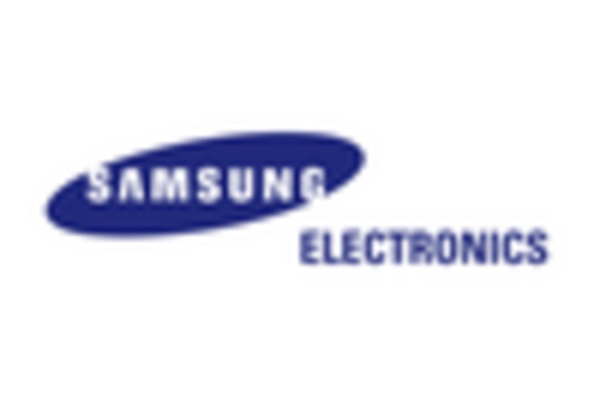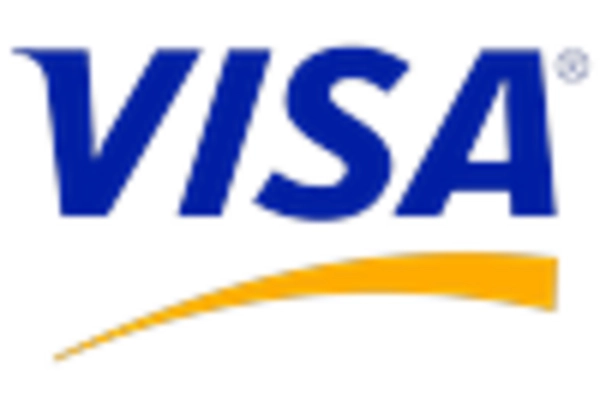Consumer Demand for Convenience
In the context of the contactless payment market, consumer demand for convenience is a pivotal driver. Canadians are increasingly seeking quick and hassle-free payment options, which contactless methods provide. Surveys indicate that over 60% of consumers prefer contactless payments for their speed and ease of use. This demand is particularly evident in urban areas where busy lifestyles necessitate efficient transaction methods. Retailers and service providers are responding by adopting contactless payment solutions to enhance customer satisfaction and streamline operations. The contactless payment market is thus adapting to meet these evolving consumer preferences, which could lead to further innovations and enhancements in payment technologies.
Increased Focus on Health and Hygiene
The contactless payment market in Canada is also being driven by an increased focus on health and hygiene. As consumers become more health-conscious, the preference for contactless transactions has grown, as they minimize physical contact during payments. This trend is particularly relevant in retail and food service sectors, where hygiene standards are paramount. Data suggests that nearly 75% of Canadians are more inclined to use contactless payments to avoid touching surfaces. The contactless payment market is responding to this demand by promoting contactless solutions as a safer alternative, which could lead to sustained growth in adoption rates. This heightened awareness of health and hygiene is likely to influence consumer behavior in the long term.
Government Initiatives and Regulations
Government initiatives and regulations play a crucial role in shaping the contactless payment market in Canada. The Canadian government has been actively promoting digital payment solutions to enhance financial inclusion and security. Recent policies aimed at encouraging the adoption of contactless payments have resulted in increased investment in payment infrastructure. For instance, the government has allocated funds to improve the technological capabilities of payment systems, which is expected to boost the contactless payment market. As a result, businesses are more inclined to adopt these solutions, knowing that they are supported by favorable regulatory frameworks. This alignment between government policy and market needs is likely to foster a more robust environment for contactless payment solutions.
Rise of E-commerce and Online Shopping
The rise of e-commerce and online shopping is significantly impacting the contactless payment market in Canada. As more consumers turn to online platforms for their shopping needs, the demand for secure and efficient payment methods has escalated. In 2025, it is estimated that online retail sales will account for over 20% of total retail sales in Canada, driving the need for contactless payment solutions that can facilitate quick transactions. The contactless payment market is adapting to this shift by integrating with various e-commerce platforms, ensuring that consumers have access to seamless payment options. This trend not only enhances the shopping experience but also encourages more businesses to adopt contactless payment technologies.
Technological Advancements in Payment Systems
The contactless payment market in Canada is experiencing a surge due to rapid technological advancements in payment systems. Innovations such as Near Field Communication (NFC) and Radio Frequency Identification (RFID) are enhancing the efficiency and convenience of transactions. As of 2025, approximately 70% of Canadians are utilizing contactless payment methods, reflecting a growing preference for speed and ease in financial transactions. This trend is further supported by the increasing penetration of smartphones equipped with NFC technology, which facilitates seamless payments. The contactless payment market is thus poised for growth as consumers increasingly favor these modern payment solutions, leading to a shift in how transactions are conducted across various sectors, including retail and transportation.

















Leave a Comment